Plantation tourism involves visiting former plantations, offering insights into their history, culture, and often, the darker legacy of slavery; SIXT.VN can help you navigate these complex and important historical sites in Vietnam and beyond, ensuring a respectful and educational experience. Discover the nuances of these sites and learn how to engage thoughtfully with their past to enrich your travels.
1. What Exactly Is Plantation Tourism?
Plantation tourism involves visiting former agricultural estates, known as plantations, that typically cultivated cash crops like cotton, sugar, tobacco, or rice. These plantations, particularly in the Southern United States and parts of Asia, Africa, and the Caribbean, relied heavily on enslaved or indentured labor. Today, many of these sites have been transformed into tourist attractions, offering visitors a glimpse into the historical operations of the estates, the lives of the plantation owners, and, increasingly, the experiences of the enslaved or indentured people who lived and worked there. It’s a form of cultural heritage tourism that seeks to interpret and present the history of these locations. SIXT.VN provides access to tours and transportation that help you explore these sites responsibly and respectfully.
1.1. The Historical Context of Plantation Tourism
Plantation tourism emerged in the decades following the American Civil War as a way for former plantation owners to generate income by showcasing their homes and properties. Early tours often emphasized the grandeur of the architecture and the lifestyle of the white elite, while downplaying or ignoring the brutal realities of slavery. Over time, however, there has been a growing movement to present a more balanced and accurate portrayal of plantation life, including the stories and contributions of the enslaved Africans and African Americans who were integral to the plantations’ success. Today, plantation tourism is evolving to include more inclusive and historically accurate narratives, but it remains a complex and sensitive topic.
1.2. Key Elements of Plantation Tourism Experiences
A typical plantation tourism experience might include several components:
-
Guided Tours: These tours provide visitors with information about the history of the plantation, the architecture of the buildings, and the crops that were cultivated.
-
Historical Exhibits: Many plantations feature museums or exhibits that showcase artifacts, documents, and images related to the plantation’s history.
-
Reenactments and Demonstrations: Some sites offer reenactments of historical events or demonstrations of traditional crafts and agricultural techniques.
-
Educational Programs: These programs aim to educate visitors about the history of slavery and its impact on American society.
-
Accommodation and Dining: Some plantations offer overnight accommodations and dining experiences that allow visitors to immerse themselves in the atmosphere of the past.
-
Memorials and Interpretive Centers: These spaces are dedicated to honoring the lives and experiences of enslaved people, providing a platform for remembrance and reflection.
1.3. The Growing Popularity of Plantation Tourism
Plantation tourism has become increasingly popular in recent years, attracting millions of visitors annually. This surge in interest can be attributed to several factors, including:
-
Increased Awareness of History: As society becomes more aware of the importance of understanding and acknowledging the past, there is a growing desire to visit historical sites and learn about different aspects of history.
-
Cultural Heritage Tourism: Plantation tourism falls under the umbrella of cultural heritage tourism, which focuses on experiencing the history, culture, and traditions of a particular place or region.
-
Educational Opportunities: Many people see plantation tourism as an opportunity to learn about slavery and its impact on American society, contributing to a broader understanding of historical and social issues.
-
Nostalgia and Romanticism: Some visitors are drawn to plantations because of a romanticized view of the past, often influenced by popular media portrayals of the antebellum South.
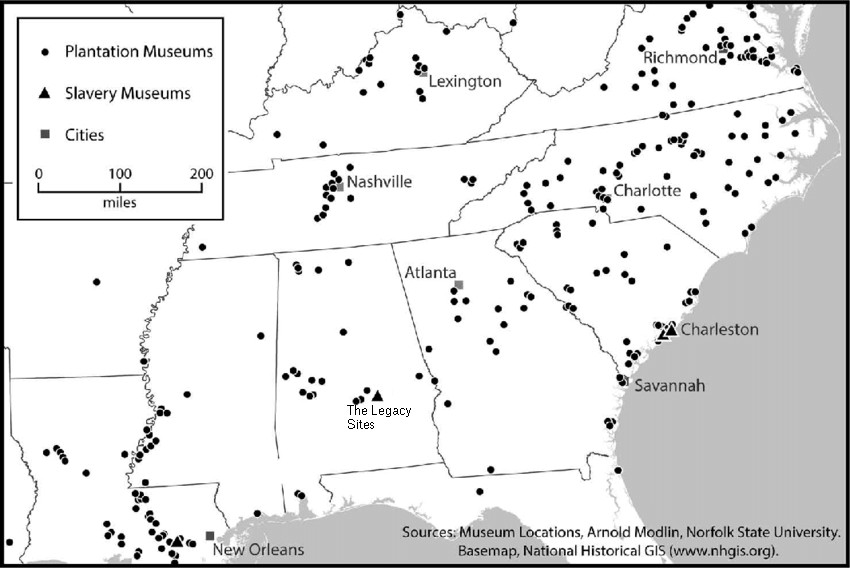 Map of Southern plantations
Map of Southern plantations
1.4. Ethical Considerations in Plantation Tourism
Plantation tourism raises significant ethical questions about how to responsibly interpret and present the history of slavery. Some critics argue that these sites can perpetuate harmful stereotypes, trivialize the suffering of enslaved people, or promote a romanticized view of the past that ignores the harsh realities of slavery. To address these concerns, it is crucial for plantation sites to:
-
Center the Stories of Enslaved People: Prioritize telling the stories of the enslaved Africans and African Americans who lived and worked on the plantations, giving them a voice and agency in the historical narrative.
-
Provide Historical Context: Offer a comprehensive and accurate historical context of slavery, including its origins, its impact on individuals and communities, and its legacy in contemporary society.
-
Acknowledge the Brutality of Slavery: Confront the harsh realities of slavery, including the violence, exploitation, and dehumanization that enslaved people experienced.
-
Engage with Descendants: Involve descendants of enslaved people in the interpretation and presentation of plantation history, ensuring that their perspectives are included and respected.
-
Promote Dialogue and Reflection: Create opportunities for visitors to engage in dialogue and reflection about the history of slavery and its relevance to contemporary issues of race, justice, and inequality.
2. What Are the Different Types of Plantation Tours Available?
Plantation tours come in various forms, each offering unique insights and experiences related to the history and culture of these sites. You can choose different tours based on what interests you. SIXT.VN provides a range of transportation options to ensure you can access the tours that best fit your interests and learning goals.
2.1. Traditional House Tours
These tours focus primarily on the “big house,” or main residence, of the plantation owner. Guides often discuss the architectural features, antique furnishings, and family history of the owners. While these tours may touch on the topic of slavery, the emphasis is usually on the lifestyle of the white elite.
2.2. Slavery-Focused Tours
These tours prioritize the stories and experiences of enslaved people. They often include visits to slave quarters, cemeteries, and other sites associated with enslaved life. Guides may share information about the daily routines, resistance efforts, and cultural contributions of enslaved people.
2.3. Gullah Geechee Tours
In coastal regions of the Southern United States, some plantations offer tours that focus on the Gullah Geechee culture, a unique African American culture that developed in the isolated coastal communities. These tours may include demonstrations of traditional crafts, music, and food, as well as information about the history and language of the Gullah Geechee people.
2.4. Combination Tours
Many plantations offer tours that combine elements of both traditional house tours and slavery-focused tours. These tours aim to provide a more balanced and comprehensive view of plantation history, acknowledging both the opulence of the white elite and the suffering of enslaved people.
2.5. Self-Guided Tours
Some plantations offer self-guided tours, allowing visitors to explore the grounds and exhibits at their own pace. These tours may include maps, audio guides, or informational brochures to provide context and information.
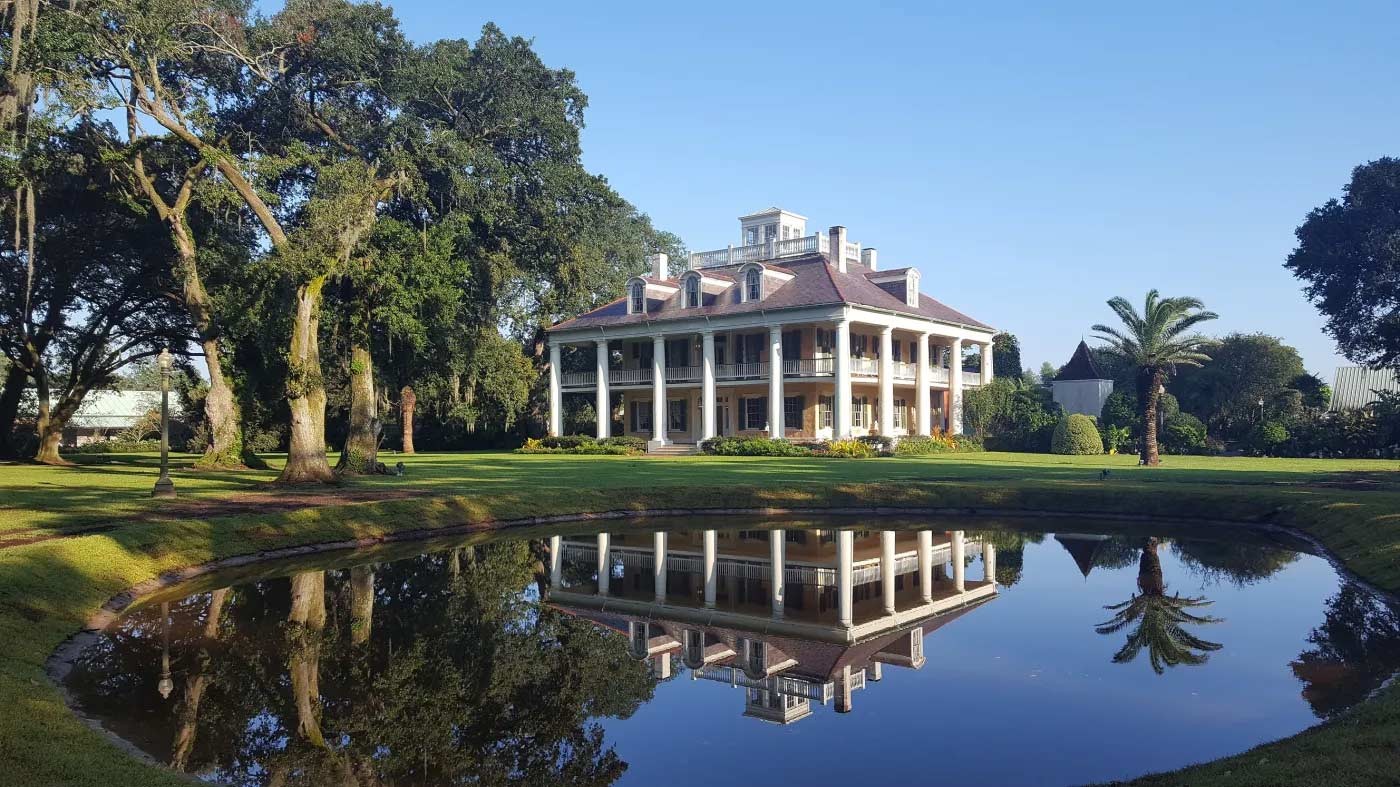 Houmas House Plantation near New Orleans
Houmas House Plantation near New Orleans
2.6. Specialty Tours
Specialty tours cater to specific interests, such as genealogical research, architectural history, or horticultural studies. These tours may be led by experts in the field and offer in-depth information on a particular topic.
2.7. Virtual Tours
With advances in technology, many plantations now offer virtual tours that allow people to experience the sites from anywhere in the world. These tours may include 360-degree views, interactive exhibits, and live Q&A sessions with guides.
3. Why Is It Important to Understand the History of Plantations?
Understanding the history of plantations is essential for several reasons, as these sites represent a significant part of our collective past. SIXT.VN encourages travelers to engage with plantation history responsibly, acknowledging the complex layers of exploitation, resilience, and cultural exchange that shaped these locations.
3.1. Acknowledging the Legacy of Slavery
Plantations were at the heart of the institution of slavery, and understanding their history is crucial for acknowledging the profound and lasting impact of slavery on individuals, families, and communities. By learning about the lives and experiences of enslaved people, we can begin to understand the full scope of this tragedy and its ongoing effects on American society.
3.2. Confronting Racial Injustice
The history of plantations is inextricably linked to issues of racial injustice and inequality. By studying this history, we can gain a deeper understanding of the systemic racism that continues to plague our society and work towards creating a more just and equitable future.
3.3. Recognizing the Contributions of Enslaved People
Enslaved people were not simply victims of oppression; they were also skilled laborers, artisans, and cultural innovators who made significant contributions to the economic and cultural development of the United States. By recognizing their contributions, we can begin to challenge the dehumanizing narratives of slavery and acknowledge the agency and resilience of enslaved people.
3.4. Promoting Historical Accuracy
Plantation history has often been romanticized or distorted to downplay the brutality of slavery and glorify the antebellum South. By promoting historical accuracy, we can ensure that the stories of enslaved people are told truthfully and respectfully.
3.5. Fostering Dialogue and Reconciliation
Understanding the history of plantations can foster dialogue and reconciliation between different groups and communities. By engaging in open and honest conversations about the past, we can begin to heal the wounds of slavery and build a more inclusive and understanding society.
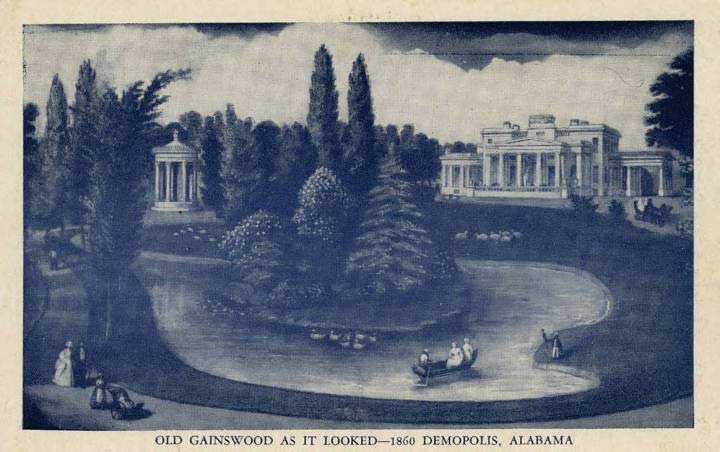 old gaineswood 1860 adah web
old gaineswood 1860 adah web
3.6. Educating Future Generations
It is essential to educate future generations about the history of plantations so that they can learn from the mistakes of the past and work towards creating a better future. By teaching children and young people about the realities of slavery, we can help them develop a sense of empathy, compassion, and social responsibility.
4. How Can Plantation Tourism Be Done Responsibly and Respectfully?
Engaging in plantation tourism requires a high degree of sensitivity and ethical awareness. SIXT.VN is committed to promoting responsible tourism practices that respect the dignity and memory of enslaved people.
4.1. Choosing Reputable Sites
Select plantation sites that prioritize historical accuracy, center the stories of enslaved people, and engage with descendants and community stakeholders. Look for sites that have a clear mission statement and a commitment to education and interpretation.
4.2. Supporting Ethical Tourism Practices
Support plantation sites that use their resources to promote education, preservation, and community development. Avoid sites that perpetuate harmful stereotypes, trivialize the suffering of enslaved people, or profit from a romanticized view of the past.
4.3. Engaging with Guides and Interpreters
Listen carefully to the guides and interpreters at plantation sites and ask questions to gain a deeper understanding of the history and culture of the site. Be respectful of their knowledge and expertise and avoid engaging in debates or arguments.
4.4. Paying Attention to Language and Terminology
Use respectful and accurate language when discussing the history of slavery. Avoid using euphemisms or romanticized terms that downplay the brutality of slavery. Use the term “enslaved people” rather than “slaves” to emphasize their humanity and agency.
4.5. Reflecting on the Experience
Take time to reflect on your experience at plantation sites and consider the lessons you have learned. Discuss your thoughts and feelings with others and consider how you can use your newfound knowledge to promote social justice and equality.
4.6. Respecting the Remains
When going on these tours, you need to remain respectful of any burial grounds or cemeteries that may be on the grounds. Remember that these sites are sacred places for the descendants of enslaved people, and treat them with reverence and respect.
5. What Are Some Examples of Plantations That Offer Educational Tours?
Several plantations across the United States have made significant efforts to offer educational tours that accurately and respectfully portray the history of slavery. These sites serve as models for responsible plantation tourism, prioritizing education, interpretation, and community engagement. SIXT.VN supports access to these and other important cultural sites, helping visitors explore and learn from these historical destinations.
5.1. Whitney Plantation (Wallace, Louisiana)
Whitney Plantation is the only plantation museum in Louisiana with an exclusive focus on the lives of enslaved people. The museum features exhibits, memorials, and restored slave quarters that provide a comprehensive and unflinching look at the realities of slavery.
5.2. McLeod Plantation Historic Site (Charleston, South Carolina)
McLeod Plantation Historic Site interprets the history of the plantation from multiple perspectives, including those of the plantation owners, the enslaved people, and their descendants. The site features restored slave dwellings, a cotton gin, and a hospital, as well as exhibits on Gullah Geechee culture and the Civil War.
5.3. Monticello (Charlottesville, Virginia)
Monticello, the home of Thomas Jefferson, has made significant efforts to interpret the history of slavery at the site. The plantation offers tours that focus on the lives of enslaved people, as well as exhibits on Jefferson’s views on slavery and his relationship with Sally Hemings.
5.4. The Hermitage (Nashville, Tennessee)
The Hermitage, the home of President Andrew Jackson, has expanded its interpretation of slavery in recent years. The plantation offers tours that explore the lives of enslaved people, as well as exhibits on Jackson’s involvement in the institution of slavery.
5.5. Drayton Hall Plantation (Charleston, South Carolina)
Drayton Hall Plantation is an unrestored plantation that focuses on interpreting the history of the site through archaeological evidence and historical documents. The plantation offers tours that explore the lives of the Drayton family and the enslaved people who lived and worked on the plantation.
 roof with mannequins web
roof with mannequins web
5.6. Somerset Place (Creswell, North Carolina)
Somerset Place is a state historic site that interprets the history of a large plantation that once enslaved over 300 people. The site offers tours that explore the lives of enslaved people, as well as exhibits on the history of the plantation and the surrounding community.
6. What Are Some Alternative Ways to Learn About the History of Slavery?
If you are unable to visit plantation sites in person, there are many alternative ways to learn about the history of slavery. These resources can provide valuable insights and perspectives on this important topic. SIXT.VN encourages you to explore these options and deepen your understanding of slavery and its legacy.
6.1. Reading Books and Articles
There are countless books and articles available on the history of slavery, covering a wide range of topics and perspectives. Some notable titles include “The Half Has Never Been Told: Slavery and the Making of American Capitalism” by Edward E. Baptist, “Slavery by Another Name: The Re-Enslavement of Blacks After the Civil War” by Douglas A. Blackmon, and “Incidents in the Life of a Slave Girl” by Harriet Jacobs.
6.2. Watching Documentaries and Films
Documentaries and films can offer powerful and moving portrayals of the history of slavery. Some notable titles include “13th,” a documentary by Ava DuVernay that explores the history of racial inequality in the United States, and “Roots,” a miniseries based on the novel by Alex Haley that tells the story of an enslaved man and his descendants.
6.3. Visiting Museums and Historical Sites
In addition to plantation sites, there are many museums and historical sites that offer exhibits and programs on the history of slavery. Some notable examples include the National Museum of African American History and Culture in Washington, D.C., the Legacy Museum in Montgomery, Alabama, and the African Burial Ground National Monument in New York City.
6.4. Exploring Online Resources
Numerous online resources are available for learning about the history of slavery. Some notable examples include the website of the Equal Justice Initiative, which offers information on the history of slavery and its legacy, and the website of the National Archives, which provides access to primary source documents related to slavery.
6.5. Participating in Community Events and Discussions
Many communities offer events and discussions on the history of slavery, providing opportunities to learn from experts and engage with others who are interested in the topic. Check with local libraries, historical societies, and community organizations to find events in your area.
6.6. Tracing Your Own Ancestry
Exploring your own family history can be a powerful way to connect with the history of slavery. Many resources are available to help you trace your ancestry, including online genealogy databases and historical archives.
7. What Is the Role of Local Communities in Plantation Tourism?
Local communities play a crucial role in shaping the narrative and impact of plantation tourism. SIXT.VN recognizes the importance of engaging with local stakeholders and supporting tourism initiatives that benefit the community.
7.1. Providing Context and Perspective
Local communities can provide valuable context and perspective on the history of plantations, sharing stories and experiences that may not be included in traditional historical accounts. By engaging with local residents, visitors can gain a deeper understanding of the social, economic, and cultural impact of plantations on the surrounding community.
7.2. Preserving Cultural Heritage
Local communities often play a key role in preserving the cultural heritage of plantation sites, including historic buildings, artifacts, and traditions. By supporting local preservation efforts, visitors can help ensure that these important historical resources are protected for future generations.
7.3. Promoting Economic Development
Plantation tourism can be a source of economic development for local communities, creating jobs and generating revenue for local businesses. By supporting local businesses and tourism initiatives, visitors can help strengthen the local economy and improve the quality of life for community residents.
7.4. Fostering Dialogue and Reconciliation
Local communities can use plantation tourism as a tool for fostering dialogue and reconciliation between different groups and communities. By creating opportunities for open and honest conversations about the past, local residents can help heal the wounds of slavery and build a more inclusive and understanding society.
7.5. Ensuring Community Benefits
It is important to ensure that plantation tourism benefits local communities, rather than exploiting them. This can be achieved by involving local residents in the planning and management of tourism initiatives, ensuring that local businesses and workers are prioritized, and using tourism revenue to support community development projects.
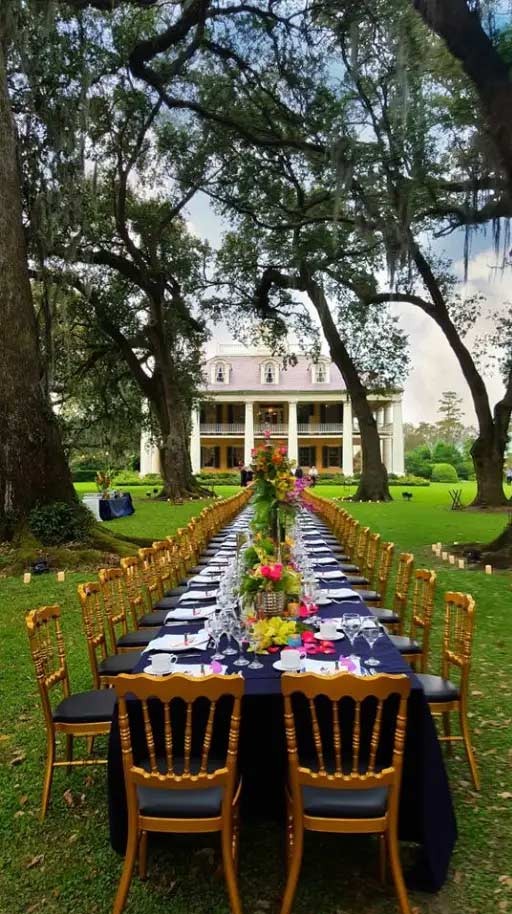 banquet table plantation web
banquet table plantation web
7.6. Addressing Community Concerns
Plantation tourism can raise concerns among local residents, particularly those who are descendants of enslaved people. It is important to address these concerns openly and honestly, and to work collaboratively to find solutions that benefit the entire community.
8. What Are Some Common Misconceptions About Plantation Tourism?
There are several common misconceptions about plantation tourism that can lead to misunderstandings and misinterpretations. SIXT.VN aims to dispel these myths and promote a more accurate and nuanced understanding of plantation history and tourism.
8.1. All Plantations Are the Same
One common misconception is that all plantations are the same, and that they all offer the same experiences and perspectives. In reality, plantations vary widely in terms of their history, architecture, and interpretation. Some plantations prioritize the stories of enslaved people, while others focus primarily on the lives of the white elite.
8.2. Plantation Tours Are Always Accurate and Objective
Another misconception is that plantation tours are always accurate and objective, and that they provide a complete and unbiased view of history. In reality, plantation tours are often shaped by the perspectives and biases of the tour guides and the plantation owners. It is important to be critical of the information presented on plantation tours and to seek out multiple perspectives.
8.3. Plantation Tourism Is Always Harmful
Some people believe that plantation tourism is always harmful, and that it inevitably perpetuates harmful stereotypes and trivializes the suffering of enslaved people. While it is true that plantation tourism can be problematic, it can also be a valuable tool for education, dialogue, and reconciliation. The key is to engage in plantation tourism responsibly and respectfully, choosing reputable sites and supporting ethical tourism practices.
8.4. Plantation Tourism Is Just About the Past
Another misconception is that plantation tourism is just about the past, and that it has no relevance to contemporary issues. In reality, the history of plantations is deeply connected to contemporary issues of race, justice, and inequality. By understanding the history of plantations, we can gain a deeper understanding of these issues and work towards creating a more just and equitable future.
8.5. Plantation Tourism Is Only for White People
Some people believe that plantation tourism is only for white people, and that African Americans and other people of color have no place in this type of tourism. In reality, plantation tourism can be a valuable experience for people of all backgrounds, providing opportunities to learn about history, connect with heritage, and engage in dialogue and reconciliation.
8.6. Plantations Are Romantic and Idyllic Places
Another dangerous misconception is the romanticization of plantations as idyllic and glamorous places. This narrative often ignores or downplays the brutal realities of slavery and the suffering of enslaved people. It is crucial to remember that plantations were sites of forced labor, violence, and oppression.
9. How Is Plantation Tourism Evolving in the 21st Century?
Plantation tourism is evolving in the 21st century as more sites grapple with the complexities of their history and seek to present more accurate and inclusive narratives. SIXT.VN is committed to supporting this evolution by promoting responsible tourism practices and highlighting sites that are making meaningful efforts to address their past.
9.1. Increased Focus on Enslaved People’s Stories
One of the most significant trends in plantation tourism is an increased focus on the stories and experiences of enslaved people. Many plantations are now working to uncover and share the names, histories, and contributions of the enslaved Africans and African Americans who lived and worked on their sites.
9.2. Collaboration with Descendant Communities
Another important trend is a growing collaboration between plantation sites and descendant communities. By working together, these groups can ensure that the stories of enslaved people are told accurately and respectfully, and that the voices of descendants are included in the interpretation of plantation history.
9.3. Use of Technology and Digital Media
Plantation sites are increasingly using technology and digital media to enhance the visitor experience and provide access to information and resources. This includes the use of online exhibits, virtual tours, and interactive displays that allow visitors to explore plantation history in new and engaging ways.
9.4. Emphasis on Education and Dialogue
Many plantation sites are now emphasizing education and dialogue as key components of their mission. This includes offering workshops, seminars, and discussion groups that explore the history of slavery and its relevance to contemporary issues.
9.5. Re-evaluation of Wedding and Event Policies
Some plantation sites are re-evaluating their policies on weddings and events, recognizing that these events can be insensitive and disrespectful to the memory of enslaved people. Some sites have chosen to ban weddings and events altogether, while others have implemented guidelines to ensure that these events are conducted in a respectful and appropriate manner.
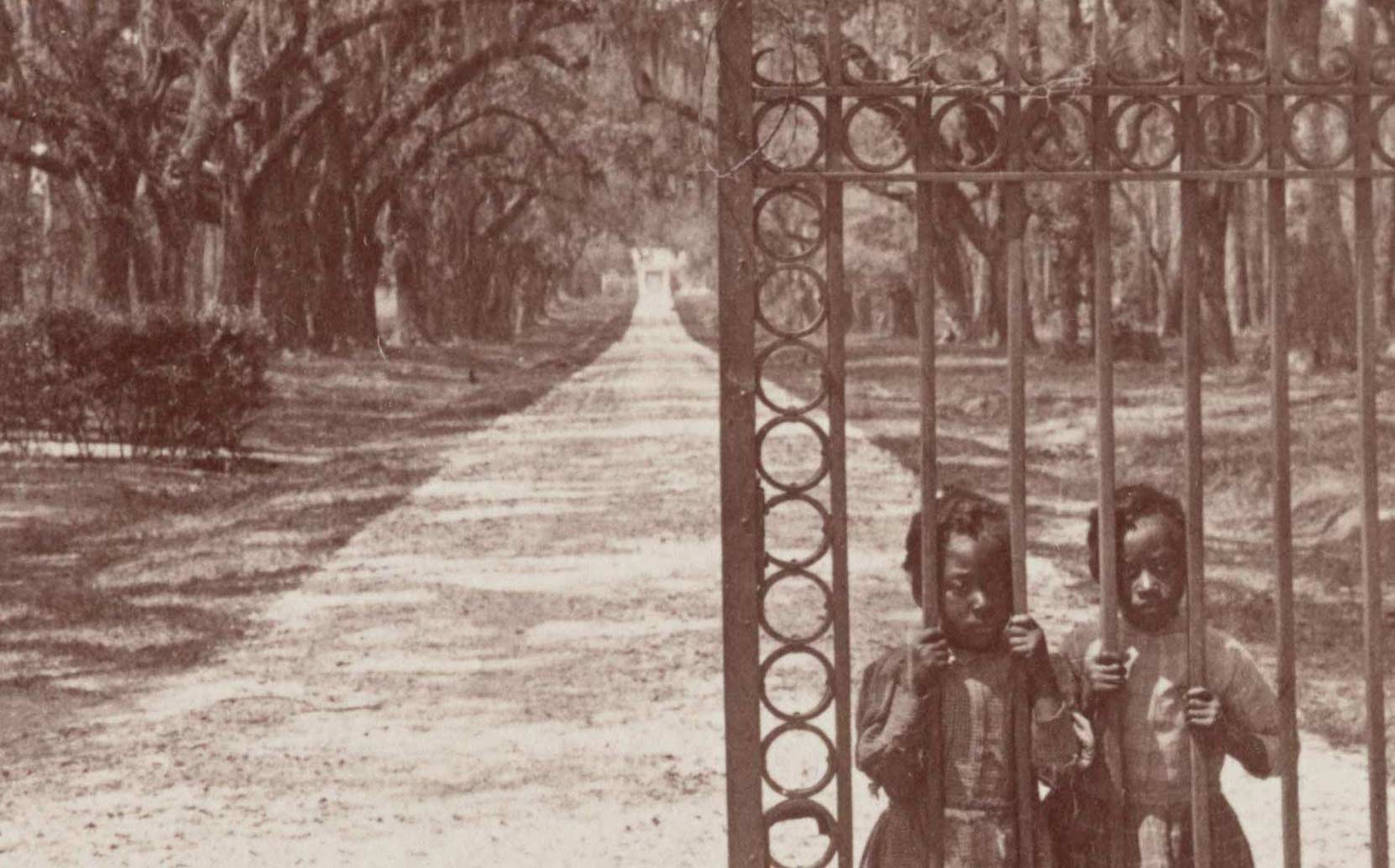 goosecreek plantation charleston web 3
goosecreek plantation charleston web 3
9.6. Integration of Contemporary Art and Expression
Some plantations are incorporating contemporary art and expression into their interpretation, providing opportunities for artists and performers to respond to the history of slavery in creative and thought-provoking ways.
10. What Are Some Emerging Trends and Challenges in Plantation Tourism?
As plantation tourism continues to evolve, several emerging trends and challenges are shaping its future. SIXT.VN is committed to staying informed about these developments and working to promote responsible and sustainable tourism practices.
10.1. Increased Demand for Authenticity and Transparency
Visitors are increasingly demanding authenticity and transparency from plantation sites, seeking out sites that are honest about their history and committed to telling the stories of enslaved people.
10.2. Growing Scrutiny of Ownership and Funding
There is growing scrutiny of the ownership and funding of plantation sites, with visitors and activists questioning whether these sites are profiting from the legacy of slavery.
10.3. Balancing Preservation and Interpretation
Plantation sites face the challenge of balancing the preservation of historic buildings and landscapes with the need to interpret the history of slavery in a meaningful and respectful way.
10.4. Engaging with Diverse Audiences
Plantation sites are working to engage with diverse audiences, including African Americans, people of color, and international visitors, who may have different perspectives and experiences related to the history of slavery.
10.5. Adapting to Changing Social and Political Contexts
Plantation tourism is constantly adapting to changing social and political contexts, as new issues and debates emerge related to race, justice, and inequality.
10.6. Competition with Other Forms of Heritage Tourism
Plantation tourism faces competition from other forms of heritage tourism, such as cultural tourism, eco-tourism, and adventure tourism. Plantation sites must find ways to differentiate themselves and offer unique and compelling experiences to attract visitors.
Navigating the complexities of plantation tourism requires careful planning and a commitment to responsible travel. Let SIXT.VN help you arrange your transportation, tours, and accommodations, ensuring a respectful and insightful journey into the past. Contact us today to start planning your exploration of these important historical sites. Address: 260 Cau Giay, Hanoi, Vietnam. Hotline/Whatsapp: +84 986 244 358. Website: SIXT.VN.
FAQ: Understanding Plantation Tourism
-
Plantation tourism involves visiting former agricultural estates to learn about their history, culture, and the legacy of slavery.
-
Why is it important to understand the history of plantations?
It helps acknowledge the legacy of slavery, confront racial injustice, recognize the contributions of enslaved people, and promote historical accuracy.
-
How can plantation tourism be done responsibly?
Choose reputable sites, support ethical tourism practices, engage respectfully with guides, use accurate language, and reflect on the experience.
-
What are some examples of plantations that offer educational tours?
Whitney Plantation, McLeod Plantation Historic Site, and Monticello are a few examples.
-
What are alternative ways to learn about the history of slavery?
Reading books, watching documentaries, visiting museums, and exploring online resources are great alternatives.
-
What is the role of local communities in plantation tourism?
They provide context, preserve cultural heritage, promote economic development, and foster dialogue.
-
What are common misconceptions about plantation tourism?
Misconceptions include thinking all plantations are the same, tours are always accurate, and tourism is inherently harmful.
-
How is plantation tourism evolving in the 21st century?
There’s an increased focus on enslaved people’s stories, collaboration with descendant communities, and use of technology.
-
What are emerging trends in plantation tourism?
Trends include demands for authenticity, scrutiny of ownership, and balancing preservation with interpretation.
-
Why should I use SIXT.VN for my plantation tourism travel needs?
SIXT.VN offers reliable transportation, expert tour guidance, and comfortable accommodations, ensuring a respectful and insightful journey.



